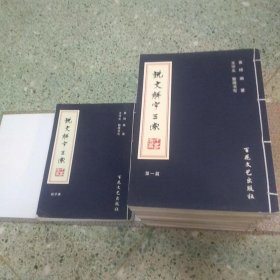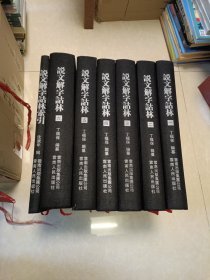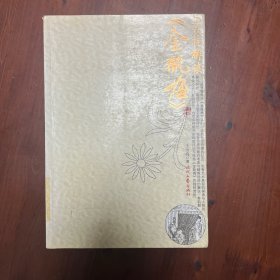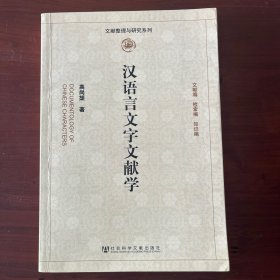
基础化学动力学(英文版)
¥ 45 九品
仅1件
上海浦东
认证卖家担保交易快速发货售后保障
作者S.R.Logan 著
出版社世界图书出版公司
出版时间2004-01
版次1
装帧平装
上书时间2024-11-17
- 在售商品 暂无
- 平均发货时间 15小时
- 好评率 暂无
- 店主推荐
- 最新上架
商品详情
- 品相描述:九品
图书标准信息
- 作者 S.R.Logan 著
- 出版社 世界图书出版公司
- 出版时间 2004-01
- 版次 1
- ISBN 9787506234030
- 定价 45.00元
- 装帧 平装
- 开本 其他
- 纸张 胶版纸
- 页数 264页
- 【内容简介】
-
When teaching chemical kinetics to successive cohorts of undergraduates I have often wished that there existed an inexpensive textbook possessing all the conceivable virtues. It should, as far as possible, treat all aspects of kinetics, rather than leave important topics unmentioned. It should do justice to both experiment and theory, putting the role of each in context. It should explain concepts in ways that students might be expected to understand, aiming for the merits of lucidity and simplicity rather than for excessive erudition.
In December 1993, I was invited to prepare my own undergraduate text on kinetics. In doing this I have started at the beginning since I believe that many difficulties about kinetics are derived from an incomplete understanding of the basics. Technological advances have resulted in the widespread use of many kinetic techniques, not merely by physical chemists, but by organic (and not simply physical organic) chemists, inorganic chemists and biochemists. A growing proportion of the ever-expanding chemicalN literature contains some kinetic component. For all such workers, the fundamentals of the subject are vitally important. To avoid too large a compendium, in regard to various aspects I have had to make my selection. In so doing, my central aim has been to illustrate the principles involved. - 【目录】
-
Preface
Acknowledgements
1 THE EMPIRICAL FRAMEWORK OF CHEMICAL KINETICS
1.1 Introduction
1.2 The rate equation
1.3 Integrated rate equations
1.4 Reaction half-life and mean lifetime
1.5 The determination of reaction order
1.6 Effect of temperature on reaction rates
Suggested reading
Problems
2 THE EXPERIMENTAL STUDY OF REACTION KINETICS
2.1 Minimum requirements for the study of chemical kinetics
2.2 The evolution of techniques for monitoring reaction progress
2.3 The application of spectrophotometry to chemical kinetics
2.4 Electrical conductivity and dilatometry
2.5 Techniques for the gas phase
2.6 Modern experimental techniques
2.7 The evaluation of the rate constant
Suggested reading
Problems
3 REACTION MECHANISM AND REACTION ORDER
3.1 An elementary reaction and the molecularity
3.2 Consecutive reaction processes
3.3 Formation of an intermediate complex
3.4 The "third body" effect in atom recombination
3.5 Parallel reactions
3.6 Reactant participating in equilibria
3.7 Opposing reactions
3.8 Isotopic exchange reactions
Suggested reading
Problems
4 THEORIES OF BIMOLECULAR REACTIONS
4.1 The Collision Theory
4.2 Transition State Theory
4.3 The theory of diffusion-controlled reactions in solution
Suggested reading
Problems
5 THE INTERPRETATION OF BIMOLECULAR REACTIONS IN SOLUTION
5.1 Solvent effects on reaction rates
5.2 Applied hydrostatic pressure
5.3 Dielectric permittivity
5.4 Ionic strength
5.5 Linear free energy relationships
5.6 Kinetic isotope effects
5.7 Electron transfer reactions in solution
Suggested reading
Problems
6 UNIMOLECULAR GAS PHASE REACTIONS
6.1 The kinetic results
6.2 The Lindemann mechanism
6.3 The RRK (or Kassel) theory
6.4 The RRKM theory
Suggested reading
Problems
7 CHAIN REACTIONS
7.1 Linear chain reactions
7.2 Pyrolysis reactions involving chain mechanisms
7.3 Chain polymerisation: free radical processes
7.4 Chain polymerisation: ionic processes
7.5 Less simple linear chain reactions
7.6 Branching chains and explosion phenomena
Suggested reading
Problems
8 HETEROGENEOUS CATALYSIS
8.1 Introduction
8.2 Chemisorption and the chemisorbed state
8.3 The Langmuir adsorption isotherm
8.4 Reactions on a catalyst surface
8.5 Catalytic exchange of alkanes with deuterium
……
9 HOMOGENEOUS CATALYSIS
10 RELAXATION AND OTHER ADVANCED TECHNIQUES
11 PHOTOCHEMISTRY AND RADIATION CHEMISTRY
12 REACTION DYNAMICS
APPENDIX A
APPENDIX B
ANSWERS TO THE PROBLEMS
NDEX
IEDEX OF CHEMICAL REACTIONS
点击展开
点击收起
— 没有更多了 —























以下为对购买帮助不大的评价